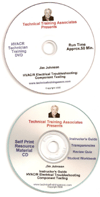NOTTINGHAM, England — The University of Nottingham announced it has developed a new and easy-to-use test for measuring the airtightness of buildings in order to help eliminate drafts, improve energy efficiency, and reduce heating bills.
The testing of airtightness is needed to help establish and minimize the infiltration rate of cold air into buildings and the loss of heated air out through gaps, holes, and cracks in the building envelope. Testing is also required in case the building is too “tight,” as too little ventilation can lead to poor IAQ, which in turn can cause adverse health effects for occupants.
Known as the PULSE test, the new airtightness tester has been extensively researched and developed by the University of Nottingham over 14 years and is now being commercialized with industry partners.
Dr. Ed Cooper, lead developer of the PULSE test, from the Architecture, Energy and Environment research group at The University of Nottingham, said: “The gap between design and performance of airtightness in buildings can at best cause discomfort for occupants and at worst create significant energy wastage and health problems.
“The new test, which is quick and easy to operate, could help mitigate these problems by enabling tests that can be conducted by anyone with minimal training. It could have a big impact on improving the performance of buildings.”
HOW IT WORKS
The PULSE test releases a short burst of air that creates a low pressure pulse throughout the whole test building. This can then be used to measure the flow through leakage pathways and thus the airtightness of the building.
The latest version of the PULSE test comprises a composite compressed air tank and control box mounted on a compact, portable base that can be wheeled into a building for testing.
The test takes only a few seconds and causes minimal disruption to construction work or building occupants.
Test results are calculated by the PULSE unit, which has a user-friendly graphical interface for analysis. The test unit is said to provide accurate and repeatable results by measuring at typical infiltration pressures and accounting for changes in background pressure levels caused by the wind or outside temperature.
The university is currently in negotiations to license the technology to a joint venture, consisting of Elmhurst Energy, National Energy Foundation and Absolute Air and Gas, to make the PULSE test a commercial reality.
For more information, view this video. Dr. Ed Cooper can be contacted at Edward.Cooper@nottingham.ac.uk.
Publication date: 2/11/2016
Want more HVAC industry news and information? Join The NEWS on Facebook, Twitter, and LinkedIn today!







